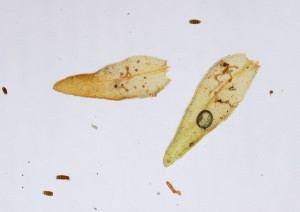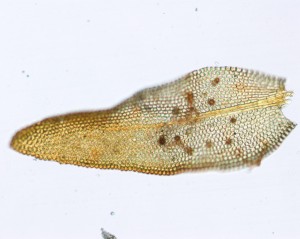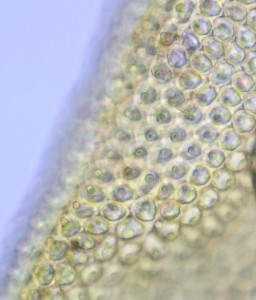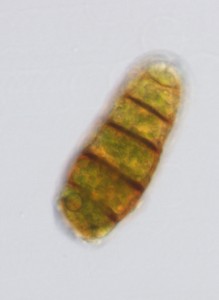Habitat
This species is commonly found growing on trees in open areas. In urban areas, such as in Vancouver and Victoria, it has also been found growing on concrete walls where it is always sterile.
Gametophyte
Overall structure:
Plants form yellow-green, small to medium-sized, tight or loose tufts. When dry, the bluntly-tipped, concave leaves are imbricate, giving the shoots a characteristically julaceous appearance
.
Leaves:
Leaves are concave and broadly ovate to oblong-ovate, with bluntly-acute to obtuse apices.
Leaf cells:
The upper leaf cells have one papillae per cell on both surfaces.
Stem:
The stems are often branched and can range from 0.5-2 cm in length, rarely reaching 3 cm.
Asexual reproduction:
Abundant, filamentous, light-green or brown gemmae can be seen scattered on the leaves.
Sporophyte
Sporangium:
The sporangium can become strongly ribbed when dry. Furthermore, stomata can be present in the middle and upper portions of the sporangium. The peristome teeth are typically reddish-brown in color and they are double.
Seta:
The seta of this species is short, ranging between 0.5-0.8 mm in length.
Spores:
The spores of O. obtusifolium are finely papillose.
Comments:
Although this is a common and widespread species of boreal forests, Orthotrichum obtusifolium uncommon in the Vancouver area, where it has been observed more often growing on concrete walls rather than on tree trunks (S. Joya, personal observation). In the absence of sporophytes, plants in urban settings can be easily overlooked for more common taxa that superficially resemble it gametophytically.





